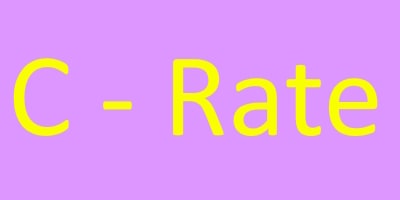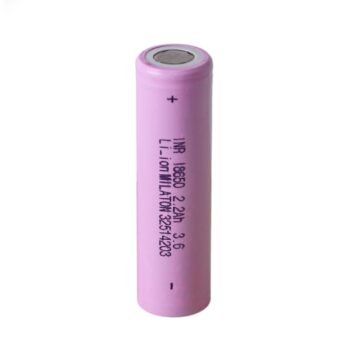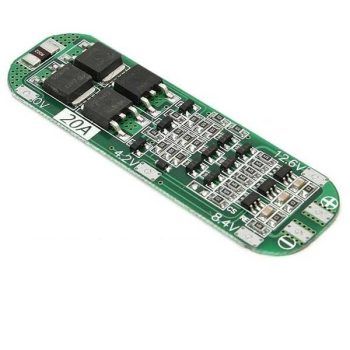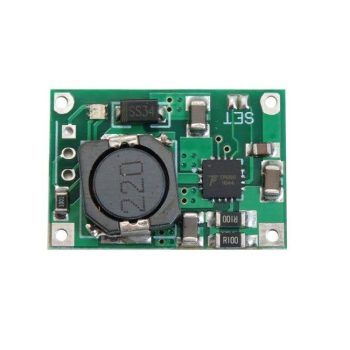مفهوم C در باتری ها چیست؟

مطالعه این مقاله نیاز به حدود 6 دقیقه زمان دارد.
نقش C-rate در عملکرد باتریهای لیتیوم-یون
مقدمه
در دنیای امروز که استفاده از دستگاههای قابل حمل، خودروهای برقی و سیستمهای انرژی خورشیدی رو به افزایش است، درک مفاهیمی مانند C-rate برای انتخاب و استفاده بهینه از باتریها اهمیت زیادی دارد. C-rate یا نرخ شارژ/دشارژ یکی از پارامترهای کلیدی در عملکرد، طول عمر و ایمنی باتریهاست. این مفهوم بهویژه در باتریهای لیتیوم-یون بسیار مهم است، چرا که این نوع باتریها در بسیاری از وسایل مدرن استفاده میشوند.
C-rate چیست؟
C-rate (سی رِیت) یک معیار یا ضریب عددی است که نشان میدهد یک باتری لیتیوم-یون با چه سرعت یا شدت جریانی میتواند شارژ شود یا انرژی ذخیرهشدهاش را تخلیه کند. این عدد نسبت جریان شارژ یا دشارژ به ظرفیت اسمی باتری است. به بیان سادهتر:
اگر یک باتری ظرفیت 1000 میلیآمپرساعت (mAh) داشته باشد:
C-rate = 1C یعنی باتری در عرض یک ساعت بهطور کامل تخلیه میشود (جریان 1000 میلیآمپر).
C-rate = 2C یعنی باتری در نیم ساعت تخلیه میشود (جریان 2000 میلیآمپر).
C-rate = 0.5C یعنی باتری در دو ساعت تخلیه میشود (جریان 500 میلیآمپر).
C لحظه ای و C مداوم:
در برندهای معتبر، معمولا حد آستانه این ضریب به دو صورت لحظه ای (instantaneous) و مداوم (continuous) درج می شود که منظور از لحظه ای یعنی حداکثر جریان به طور پالس و کوتاه (حدود 2 ثانیه) و مداوم یعنی تامین جریان درج شده به صورت دائمی و بدون گرم شدن زیاد باتری که همیشه C لحظه ای بزرگتر یا مساوی C مداوم است.
چرا C-rate در باتریهای لیتیوم-یون مهم است؟
مدیریت گرما: باتریهای لیتیوم-یون نسبت به گرما حساساند. دشارژ یا شارژ با C-rate بالا میتواند باعث گرم شدن بیش از حد و در نتیجه آسیب دیدن یا حتی انفجار شود.
طول عمر باتری: یکی از مهمترین عوامل کاهش عمر باتریهای لیتیوم-یون، شارژ و دشارژ با نرخهای بالا (مثلاً بیشتر از 3C) است.
کاربردهای خاص: برخی کاربردها مانند خودروهای برقی، پهپادها یا ابزارهای صنعتی، نیازمند باتریهایی با توانایی دشارژ سریع هستند. در این موارد، باتریهای لیتیوم-یون با C-rate بالا استفاده میشوند.
ایمنی: رعایت نرخ مناسب شارژ و دشارژ، باعث حفظ ایمنی باتری و جلوگیری از اتفاقاتی مانند تورم یا آتشسوزی میشود.
قیمت: مقدار C-rate در قیمت نهایی یک باتری تاثیر مستقیم دارد و هرچه مقدار آن بیشتر باشد، قیمت بالاتری خواهد داشت و معمولا شرکت های مطرح می توانند باتری هایی با ضریب C بالا تولید کنند، در باتری های تقلبی یا کیفیت پایین این ضریب مقدار بسیار پایینی دارد.
C-rate در کاربردهای مختلف
موبایل و لپتاپ: معمولاً با نرخ C پایین کار میکنند (0.2C تا 1C) تا عمر باتری بیشتر شود.
پهپادها و RC ها: به باتریهایی با نرخ دشارژ بالا (حتی تا 60C) نیاز دارند.
خودروهای برقی: بسته به مدل، از باتریهایی با توانایی شارژ سریع و دشارژ پیوسته استفاده میکنند (مثلاً 2C تا 5C).
مثالهایی برای درک بهتر C-rate در باتریهای لیتیوم-یون:
مثال ۱: باتری با ظرفیت 2200 میلیآمپرساعت و C-rate برابر با 10C
– جریان = 2200 × 10 = 22000 میلیآمپر = 22 آمپر
یعنی این باتری در صورت تخلیه با نرخ 10C میتواند 22 آمپر جریان بدهد و در عرض 6 دقیقه تخلیه کامل شود.
مثال ۲: باتری 1500 میلیآمپرساعت با نرخ 0.5C
– جریان = 1500 × 0.5 = 750 میلیآمپر
زمان تخلیه کامل: 2 ساعت
مثال ۳: باتری 5000 میلیآمپرساعت با نرخ شارژ 2C
– جریان شارژ = 5000 × 2 = 10000 میلیآمپر = 10 آمپر
زمان شارژ کامل: حدود 0.5 ساعت (30 دقیقه)
جمعبندی
C-rate مفهومی ساده اما بسیار مهم در درک عملکرد و انتخاب و استفاده بهینه از باتریهای لیتیوم-یون است. انتخاب باتری با C-rate مناسب، میتواند عملکرد بهتر، عمر بیشتر و ایمنی بالاتر برای دستگاه شما فراهم کند. به ویژه در دستگاههایی که نیاز به شارژ سریع یا تخلیهی سریع دارند، شناخت C-rate به شما کمک میکند بهترین باتری را انتخاب کنید.
منابع:
Battery University. What is C-rate?
Panasonic Industry. “Understanding Battery Specifications.”
Texas Instruments. “Battery Management Basics.”
Cadex Electronics. “Battery Performance Characteristics.”
LG Chem. “Lithium-Ion Battery Safety and Charging Guidelines.”
Samsung SDI. “C-rate Characteristics of Lithium-ion Cells.”
The Role of C-rate in the Performance of Lithium-ion Batteries
Introduction:
In today’s world, where portable electronics, electric vehicles, and solar energy systems are increasingly common, understanding concepts like C-rate is crucial for choosing and using batteries effectively. C-rate, or charge/discharge rate, is one of the key parameters that determine the performance, lifespan, and safety of batteries—especially lithium-ion batteries which are widely used in modern devices.
What is C-rate?
C-rate is a numerical indicator that shows how fast a lithium-ion battery can be charged or discharged relative to its capacity. In simple terms, if a battery has a capacity of 1000 milliampere-hours (mAh):
– C-rate = 1C means the battery will discharge completely in one hour (1000 mA current).
– C-rate = 2C means it will discharge in half an hour (2000 mA current).
– C-rate = 0.5C means it will discharge in two hours (500 mA current).
Instantaneous & Continuous C:
Of course, keep in mind that in reputable brands, the threshold of this rate (C-rate) is usually specified in two forms: peak (instantaneous) and continuous. The peak C-rate refers to the maximum current that can be supplied in short puls (around 2 seconds), while the continuous C-rate indicates the current that can be provided constantly without causing excessive heating of the battery. The peak C-rate is always greater than or equal to the continuous C-rate.
Why is C-rate Important in Lithium-ion Batteries?
Heat Management: Lithium-ion batteries are sensitive to heat. High C-rate discharge or charge can cause excessive heating, leading to damage or even explosion.
Battery Life: One of the main causes of reduced battery life in lithium-ion cells is frequent high C-rate operations (e.g., above 1C).
Specific Applications: Devices like EVs, drones, and industrial tools require fast power delivery, hence high C-rate lithium-ion batteries are used.
Safety: Using a battery within its recommended C-rate ensures safer operation and prevents incidents like swelling or fire.
Price: The C-rate value directly affects the final price of a battery, and the higher the value, the higher the price will be. Usually, well-known companies can produce batteries with a high C-rate, whereas in counterfeit or low-quality batteries, this value is very low.
Examples for Better Understanding of C-rate in Lithium-ion Batteries
Example 1: A 2200 mAh battery with a C-rate of 10C
– Current = 2200 × 10 = 22000 mA = 22 A
This means the battery can provide 22 amps of current and will fully discharge in 6 minutes.
Example 2: A 1500 mAh battery with a 0.5C rate
– Current = 1500 × 0.5 = 750 mA
Full discharge time: 2 hours
Example 3: A 5000 mAh battery with a 2C charge rate
– Charging current = 5000 × 2 = 10000 mA = 10 A
Full charge time: approximately 0.5 hours (30 minutes)
Conclusion
C-rate is a simple but essential concept for understanding the performance and optimal use of lithium-ion batteries. Choosing the right battery with an appropriate C-rate ensures better performance, longer life, and higher safety—especially in applications that require fast charging or discharging.
References:
Battery University. What is C-rate?
Panasonic Industry. “Understanding Battery Specifications.”
Texas Instruments. “Battery Management Basics.”
Cadex Electronics. “Battery Performance Characteristics.”
LG Chem. “Lithium-Ion Battery Safety and Charging Guidelines.”
Samsung SDI. “C-rate Characteristics of Lithium-ion Cells.”








عالی بود ممنون از شما
مرسی که کامل این موضوع را توضیح دادین
با قدرت ادامه بدین